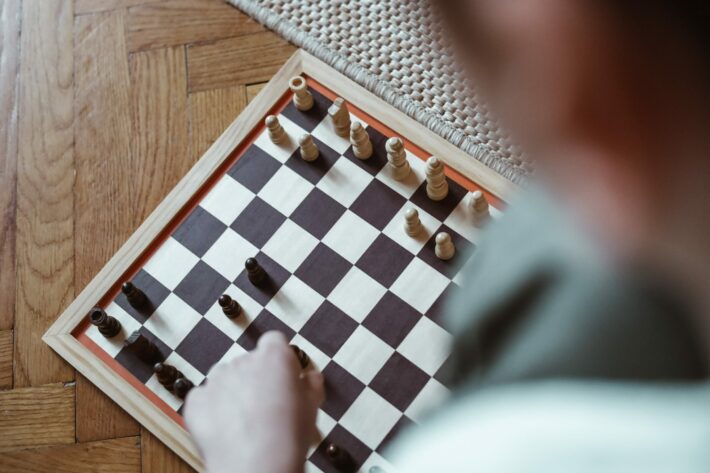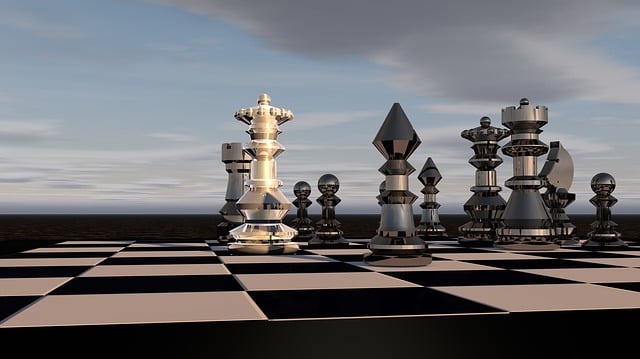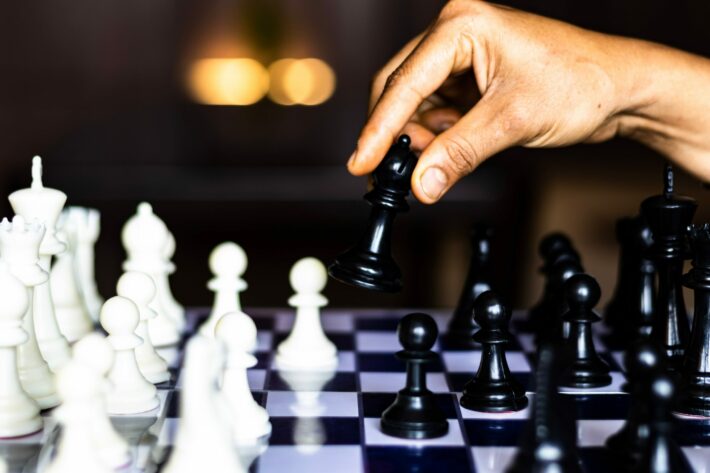Chess, the ancient game of strategy and intellect, captivates players and enthusiasts alike with its intricate rules and mind-boggling maneuvers. Among the intriguing concepts within the chess universe are draws and stalemates. While these terms may seem synonymous at first, they actually hold distinct meanings and implications.
In this article, we delve deep into the fascinating realm of chess endgames, unraveling the subtle differences between a draw and a stalemate. Prepare to expand your understanding and elevate your chess prowess!
What is a draw in chess, and how does it occur?
A draw in chess occurs when neither player can achieve a checkmate or when certain conditions are met that result in a tie. It is a fascinating outcome that showcases the delicate balance of power on the chessboard.
Draws can happen due to various reasons, such as a stalemate position, insufficient material to checkmate, or a perpetual check. Understanding the intricacies of a draw adds another layer of depth to the game, highlighting the strategic complexity that chess is renowned for.
Can a draw be considered a victory?

While a draw may not result in an outright victory, it carries its own significance in the world of chess. Often, a draw signifies the resilience and skill of both players, showcasing their ability to navigate complex positions and defend against formidable attacks.
In some cases, a well-executed draw against a stronger opponent can be seen as a moral victory, reflecting the player’s tenacity and ability to hold their ground. Thus, a draw should not be dismissed as a mere tie but celebrated as a testament to the player’s mastery of the game.
Are draws more common in high-level chess games?
High-level chess games, characterized by the intense battles between elite players, often witness a higher frequency of draws compared to lower-level competitions. The reason behind this lies in the players’ exceptional skill and deep understanding of the game.
They employ intricate strategies and demonstrate accurate defensive techniques, making it challenging for either side to gain a decisive advantage. The heightened level of competition, combined with the players’ expertise, contributes to a higher likelihood of draws, elevating the excitement and tension of these high-stakes encounters.
What are the different types of draws in chess?
Chess offers several types of draws that add fascinating dimensions to the game. Some common forms include the stalemate, where a player has no legal moves but isn’t in check, resulting in a draw instead of a checkmate.
Another type is a draw by insufficient material, occurring when neither player has enough pieces to deliver a checkmate. Additionally, players can agree to a draw by mutual consent or reach a draw through specific conditions like threefold repetition or the “50-move rule.” These diverse draw outcomes enrich the game, showcasing the intricacies of chess strategy and tactical finesse.
How does threefold repetition lead to a draw?
Threefold repetition occurs when the same position on the chessboard is repeated three times, with the same player having the move in each repetition. If this repetition arises, a player can claim a draw by declaring it to the arbiter.
This rule prevents endless repetition without progress and adds an exciting strategic element to the game. It encourages players to explore alternative paths and avoid repetitive patterns, ensuring a dynamic and evolving battle. The threefold repetition rule is an ingenious mechanism that rewards creativity and promotes dynamic play in chess.
What is the “50-move rule” in chess?

The “50-move rule” is an intriguing aspect of chess that aims to prevent excessively long games with no progress. According to this rule, if no capture has been made and no pawn has been moved in the last fifty consecutive moves by each player, a draw can be claimed.
It challenges players to maintain an active and decisive approach, encouraging them to seek opportunities for progress or tactical breakthroughs within a reasonable timeframe. The “50-move rule” injects a sense of urgency and strategic depth into the game, ensuring that battles on the chessboard remain engaging and purposeful.
Can a draw be forced by perpetual checks?
A perpetual check is a remarkable sequence of moves where a player repeatedly checks the opponent’s king, forcing a draw. This exciting tactical concept often arises in complex endgame positions or when one player has a perpetual check as their only viable option.
By skillfully utilizing the perpetual check, a player can disrupt the opponent’s plans and force a draw. This captivating maneuver showcases the importance of accurate calculation and defensive skills, proving that even a seemingly unstoppable attack can be neutralized, leading to an equal outcome.
Is a draw a sign of balanced gameplay?
A draw in chess often signifies balanced gameplay between two opponents. It showcases their ability to neutralize each other’s strategies, adapt to changing circumstances, and find counterplay even in seemingly disadvantageous situations.
Draws frequently arise when both players possess similar skill levels, resulting in intense battles of wits and ingenuity. While a draw doesn’t guarantee perfect equilibrium, it highlights the competitive nature of chess and emphasizes the need for players to continuously strive for improvement, ensuring that the game remains exciting and challenging for enthusiasts around the world.
How do grandmasters strategically aim for draws?
Grandmasters, with their profound understanding of chess, often strategically aim for draws in specific situations. They carefully evaluate the position and assess the opponent’s strengths, seeking to neutralize any potential threats.
By employing solid defensive strategies, subtle exchanges, and precise piece maneuvering, grandmasters can create a fortress-like position that is difficult for their opponent to breach.
They meticulously calculate their moves, aiming to maintain a balanced position and limit the opponent’s attacking options. Grandmasters strategically aim for draws when they believe it to be the most practical and advantageous outcome in the given circumstances.
Is it possible to convert a draw into a win?
While a draw may seem like a final outcome, skilled chess players always keep the possibility of converting it into a win in mind. This requires a combination of tactical awareness, patience, and an unwavering determination to exploit any weaknesses in the opponent’s position.
By taking calculated risks, setting up traps, and creating imbalances on the board, players can push their opponents out of their comfort zones and force errors.
With skillful play and astute decision-making, players can gradually turn the tables and transform a seemingly balanced position into a winning advantage, proving that even in the face of a draw, victory remains within reach.
What is the significance of a stalemate in chess?
A stalemate in chess is a captivating and significant occurrence that can dramatically alter the outcome of a game. It arises when a player, despite having legal moves available, cannot make any without putting their king in check.
The significance of a stalemate lies in its ability to rescue a player from an imminent loss. It showcases the defensive resourcefulness of the stalemated player, who manages to salvage a draw from what seemed like an unavoidable defeat.
Stalemates also exemplify the delicate balance between attack and defense in chess, reminding us that even the strongest positions can result in unexpected outcomes.
How does a stalemate differ from a draw?

While a stalemate is a type of draw, it possesses distinct characteristics that set it apart from other draw outcomes. In a stalemate, the player whose turn it is to move has no legal moves available and their king is not in check.
This results in an automatic draw, providing the player in the inferior position with an unexpected reprieve. In contrast, other draw outcomes may occur due to mutual agreement, insufficient material, threefold repetition, or the “50-move rule.”
Understanding the nuances of different draw scenarios, including the unique nature of a stalemate, deepens one’s appreciation for the strategic complexities and unexpected turns that chess offers.
Can a stalemate be avoided by both players?
Stalemates can be intriguing and unexpected, often catching players off guard. However, with careful play and foresight, both players can actively work to avoid falling into a stalemate trap. Players must maintain awareness of potential stalemate threats and ensure that their moves maintain a balance between attack and defense.
By judiciously advancing pawns, creating threats, and coordinating piece activity, players can navigate around stalemate possibilities and keep the game dynamic and full of possibilities until the end. Vigilance, strategic planning, and a keen eye for tactical opportunities are essential in steering clear of the pitfalls of a stalemate.
Does a stalemate benefit the player initiating it?
A stalemate is a unique situation in chess where the player initiating it does not directly benefit from the outcome. Instead, a stalemate benefits the player who would otherwise be in a losing position.
By forcing a stalemate, the player in danger of losing secures a draw, effectively denying their opponent a victory. While the player initiating the stalemate avoids defeat, they miss out on the opportunity to achieve a decisive win.
Stalemates can be seen as a tactical resource employed as a last-ditch effort to salvage a draw, but they do not provide a direct advantage to the player who sets it up.
What are some famous examples of draws and stalemates in chess history?
| Aspect | Draw | Stalemate |
|---|---|---|
| Definition | A result in chess where neither player wins; the game ends in a tie. | A specific type of draw that occurs when a player, despite having legal moves available, cannot make any without putting their own king in check. |
| Outcome | No player wins or loses; the game ends in a tie. | No player wins or loses; the game ends in a tie. |
| Effect on Game | Reflects a balanced position or strategic maneuvering where neither player can achieve checkmate. | Often saves the player in a losing position from an imminent loss and can dramatically change the game’s outcome. |
| Mechanisms | Can occur through mutual agreement, insufficient material, threefold repetition, or the “50-move rule.” | Occurs when the player whose turn it is to move has no legal moves available but is not in check. |
| Player Benefit | Neither player gains an advantage or a direct benefit from a draw. | Benefits the player in the losing position by securing a draw and denying the opponent a victory. |
Chess history is replete with remarkable examples of draws and stalemates that have left indelible marks on the game. One such example is the “Game of the Century” between Donald Byrne and Bobby Fischer in 1956, which ended in a draw after Fischer executed a stunning queen sacrifice.
Another iconic draw is the 1984 World Chess Championship match between Anatoly Karpov and Garry Kasparov, where several games resulted in draws despite intense battles and near-victories.
Additionally, the “Immortal Draw” between Richard Reti and Savielly Tartakower in 1910 stands out as a masterpiece of defensive resourcefulness. These famous examples demonstrate the enduring allure and unexpected twists that draws and stalemates can bring to the world of chess.
Concluding remarks
In conclusion, understanding the differences between draws and stalemates in chess adds depth and intrigue to the game. Draws, while not resulting in a clear victory, showcase the skill and resilience of players, and even a draw can be considered a significant achievement.
Stalemates, on the other hand, provide a unique escape for the player in a losing position, denying their opponent a win and highlighting the delicate balance between attack and defense. Whether grandmasters strategically aim for draws or endeavor to convert a draw into a win, the dynamics of chess continuously challenge players to push the boundaries of their skills.
Finally, exploring famous examples from chess history reminds us of the captivating and unexpected outcomes that draws and stalemates can produce. So, whether you’re battling for victory or navigating complex positions, remember that even in the face of a draw, the artistry and brilliance of chess endure.




